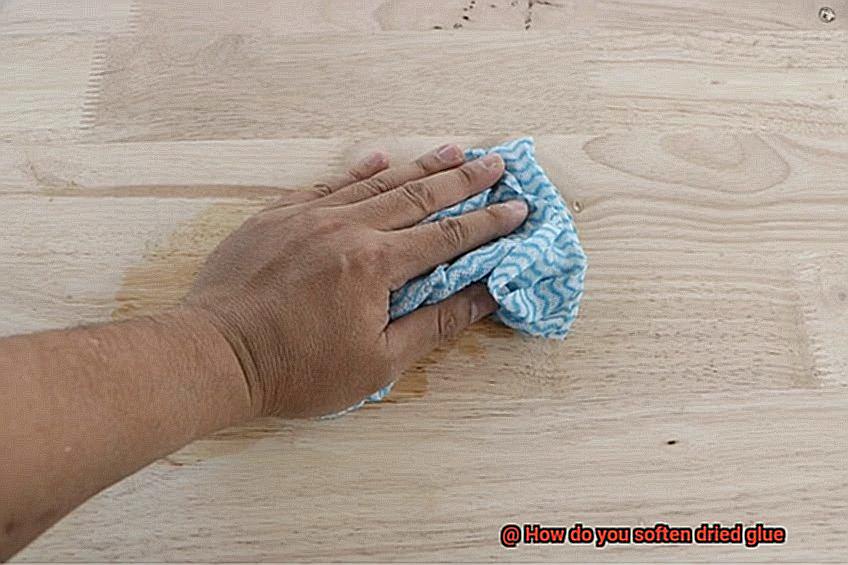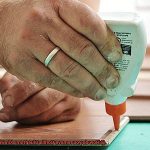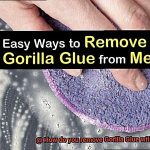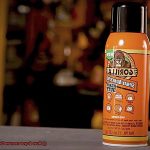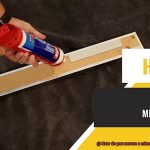It’s like finding a surprise guest that overstayed their welcome on your surfaces. Whether it’s a craft gone wrong, a glue spill disaster on your favorite shirt, or the remnants of an ambitious DIY project from years ago, dried glue can be a real pain to deal with.
We’ve got some tried-and-true methods to soften that stubborn glue and make it easier to remove.
In this article, we’re going to dive into simple yet effective ways to soften dried glue. Get ready for step-by-step instructions that will save the day when you find yourself stuck in a sticky situation. And hey, we’ll even throw in some nifty tips and tricks to make the whole process smoother than a baby’s bottom.
How do you soften dried glue?
Contents
- 1 How do you soften dried glue?
- 2 Identifying the Type of Glue
- 3 Using Heat to Soften Dried Glue
- 4 Using Solvents to Soften Dried Glue
- 5 Natural Methods for Softening Dried Glue
- 6 Mechanical Means for Softening Dried Glue
- 7 Testing Before Applying the Method
- 8 Safety Precautions When Working with Solvents or Applying Heat
- 9 Conclusion
Method 1: Warm Water Soak
Let’s start with the easiest and most accessible method – warm water. Grab yourself a bucket or basin and fill it up with warm water (not boiling hot, mind you). Take the affected area and let it soak in the warm water for about 15 to 20 minutes.
This little spa treatment will help loosen up the adhesive properties of the dried glue without causing any harm. Once the glue has softened up, grab a plastic scraper or use your fingernail (if you’re feeling brave) and gently scrape away that stubborn glue.
Method 2: Vinegar Magic
Ah, vinegar – our trusty cleaning sidekick. It turns out this wonder liquid can also work wonders on softened dried glue. Grab yourself a cloth or sponge and soak it in white vinegar. Place that vinegar-soaked superhero over the dried glue and let it work its magic for around 30 minutes.
Afterward, take that cloth or sponge and give the softened glue a gentle scrubbing session. For those extra stubborn glue spots, don’t hesitate to repeat the process until the glue surrenders and loosens up enough for easy removal.
Identifying the Type of Glue
Identifying the type of glue you are working with is the crucial first step in effectively softening and removing dried glue. There are several methods to determine the specific adhesive you are dealing with, each offering valuable insights into the composition and characteristics of the glue.
Firstly, examining the appearance and texture of the glue can provide important clues. Different glues have distinct visual and tactile properties. White glue, for example, is milky and thick, while super glue is clear and quickly forms a strong bond. Epoxy glue comes in two components that need to be mixed, and hot glue is in stick form that melts when heated. By observing these characteristics, you can narrow down the possibilities and identify the type of glue you are working with.
Another way to identify the type of glue is by checking the label or packaging. Glue manufacturers often provide information about the composition and recommended use on their labels. By reading the instructions and details on the packaging, you can gain insights into the specific type of adhesive you are dealing with.
If the label or packaging does not offer sufficient information, conducting a simple test can help identify the glue. Applying a small amount of acetone or nail polish remover on an inconspicuous area of the dried glue can soften or dissolve it if it is a cyanoacrylate-based glue like super glue.
Considering the surface that the glue has adhered to is also important in identifying its type. Different glues work better on specific materials, so knowing the type of material involved can further narrow down the possibilities. Wood glues are typically used for woodworking projects, while fabric glues are designed for bonding fabrics together.
Using Heat to Soften Dried Glue
Struggling to remove dried glue from surfaces? Look no further. Heat is your secret weapon in the battle against stubborn adhesive. In this guide, we will explore the best ways to use heat to soften dried glue, making it easier to remove. So grab your hairdryer or iron, and let’s get started.
When glue dries, it forms a strong bond that can be difficult to break. But fear not. Applying heat helps loosen the glue molecules and weaken the bond, allowing for easier removal.
One simple method is using a hairdryer or heat gun. Set it to low or medium heat and hold it a few inches away from the dried glue. Move the heat source back and forth over the glue, ensuring even heating. As the glue heats up, it softens and becomes more pliable. Then, use a scraper or your fingers to gently peel or scrape off the softened glue.
For fabric or clothing, an iron can work wonders. Set it to a low temperature and make sure there is no water in it. Place a clean cloth or towel over the dried glue and gently press the iron onto the cloth in circular motions for 20-30 seconds. The heat from the iron transfers through the cloth and softens the glue, making it easy to remove with a scraper or your fingers.
Remember these tips: start with low heat and gradually increase if necessary, wear protective gloves, ensure proper ventilation, keep flammable materials away from the heat source, and be cautious with sensitive materials.
If heat alone doesn’t remove all the dried glue, combine it with solvents or adhesive removers. The heat loosens the glue, allowing solvents to penetrate and dissolve it.
Note: Some specialized adhesives may require advanced techniques or professional assistance for removal. Consult the manufacturer’s instructions or seek professional advice if needed.
Using Solvents to Soften Dried Glue
Using solvents to soften dried glue is a crucial technique in many crafting and repair projects. Solvents are substances that have the ability to dissolve or break down another substance, in this case, dried glue. Acetone and rubbing alcohol are two commonly used solvents for this purpose, but other options like white vinegar, mineral spirits, or warm soapy water can also be effective depending on the type of glue and surface.
To safely use solvents to soften dried glue, it is important to follow a step-by-step guide. First, test the chosen solvent on a small, inconspicuous area to ensure it won’t cause any damage to the surface. This step is especially important when working with delicate materials like plastic or painted surfaces.
Next, apply the solvent by pouring a small amount onto a clean cloth or soaking a cotton swab with it. It’s crucial not to saturate the cloth or swab to avoid excessive contact with the solvent. Then, gently rub the dried glue using circular motions with the acetone-soaked cloth or rubbing alcohol-soaked cloth/swab. Apply light pressure as the solvent starts breaking down the chemical bonds in the glue, making it softer and more pliable.
Once the glue has softened, use a plastic scraper or credit card to gently scrape it off. Avoid using sharp objects that could damage the surface. Patience is key during this step as you take your time removing the softened glue.
After removing the glue, clean the area with mild soap and water to remove any residue left by the solvent. Make sure to dry the area thoroughly before applying any new adhesive or paint.
Remember to work in a well-ventilated area and take proper safety precautions, such as wearing gloves to protect your skin from prolonged exposure to solvents.
Additionally, it’s important to note that different types of glue may require different solvents, so choose accordingly based on the type of glue and surface you’re working with.
Natural Methods for Softening Dried Glue
Natural methods for softening dried glue are a safer alternative to using harsh chemicals or solvents. There are several effective methods that use common household items to soften and remove dried glue.
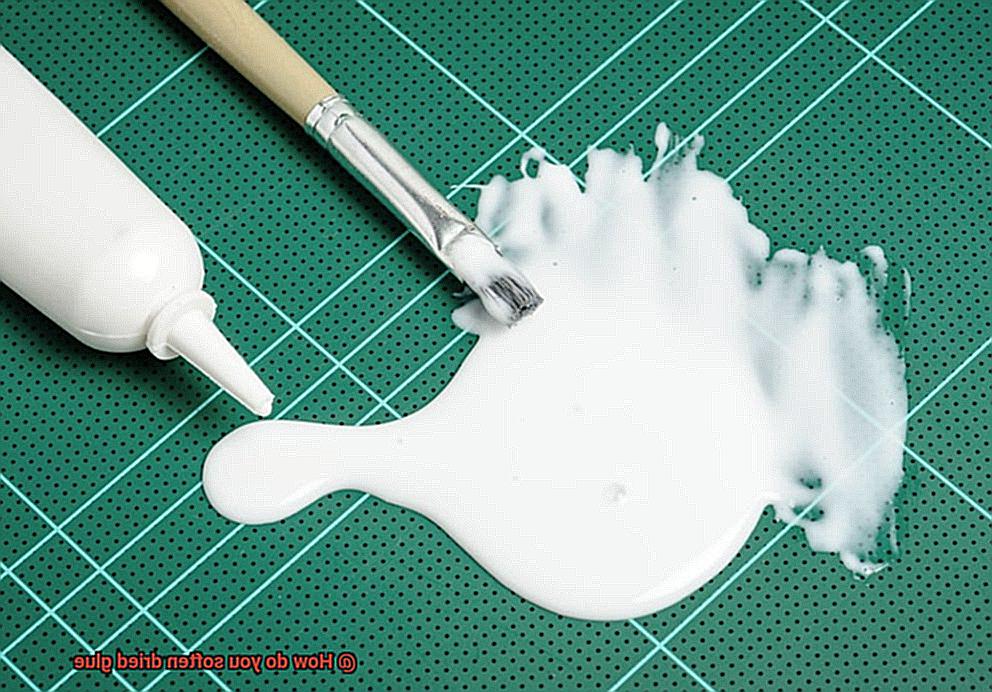
Firstly, heat can be used to soften dried glue. This can be done by using a hairdryer or a heat gun on a low setting. Gently heat the glue for a few seconds, being careful not to overheat it and cause damage. Once the glue is softened, it can be scraped off with a plastic scraper or wiped away with a cloth.
Vinegar is another natural method for softening dried glue. Soak a cloth or sponge in vinegar and place it on top of the dried glue. Let it sit for a few minutes to allow the vinegar to penetrate the glue. Once softened, the glue can be scraped off or wiped away with a cloth.
Lemon juice is also effective in breaking down dried glue. Squeeze fresh lemon juice onto the dried glue and let it sit for a few minutes. Use a plastic scraper or cloth to gently remove the softened glue.
Olive oil can be used as well. Apply a small amount of olive oil onto the dried glue and let it sit for a few minutes. The oil will help loosen the adhesive properties of the glue, making it easier to remove. Use a plastic scraper or cloth to wipe away the softened glue.
Finally, baking soda mixed with water can act as a natural abrasive to remove dried glue. Make a paste by mixing baking soda and water until it forms a thick consistency. Apply the paste onto the dried glue and let it sit for a few minutes. Gently scrub the area using a soft brush or cloth until the glue starts to loosen. Rinse with water to remove any remaining residue.
Mechanical Means for Softening Dried Glue
Mechanical means for softening dried glue involve physically manipulating the glue to break it down and make it pliable again. These methods are particularly useful for larger or thicker layers of dried glue that may require more force to soften.
One common mechanical method is using heat to melt the glue. This can be done by applying a warm temperature directly to the dried glue with a heat gun or a low-heat hairdryer. The heat should be applied evenly and gradually to prevent damage to the surface the glue is adhered to. Once the glue has softened, it can be scraped away with a putty knife or similar tool.
Solvents can also be used as a mechanical method to soften dried glue. Common solvents for glue removal include acetone, rubbing alcohol, and mineral spirits. These solvents can be applied directly to the dried glue with a cloth or cotton swab. Allow the solvent to sit on the glue for a few minutes to penetrate and soften it, then gently scrape away the softened glue with a scraper or an old toothbrush.
Abrasive methods may be necessary for removing dried glue in some cases. Sanding with fine-grit sandpaper or an abrasive sponge can help rub away the dried glue. This method works best on surfaces that can handle some abrasion without being damaged. It may take time and effort, but with patience, the dried glue can be gradually sanded away.
If these mechanical methods don’t work, there are specialized tools available for removing dried glue. Adhesive removers with scraping attachments can mechanically loosen and remove dried glue. These tools often have adjustable settings to apply different levels of force depending on the thickness and hardness of the glue.
Testing Before Applying the Method
Testing before applying any method to soften dried glue is of utmost importance. Here’s why:
- Avoid damage and discoloration: Different glues have different chemical compositions, and each may react differently to various softening methods. By testing a small, inconspicuous area first, you can assess whether the chosen method will cause any damage or discoloration to the surface or material the glue is stuck on. This helps prevent irreversible harm.
- Identify the glue type: Before applying any method, it’s crucial to identify the type of glue that has dried. Common types include white glue, super glue, epoxy, and hot glue. Each type may require a specific approach for effective softening.
- Observe reactions: Testing allows you to observe the effects of the chosen softening method on the test area. If there are negative effects such as discoloration, damage, or an unpleasant odor, it’s a clear indication that you should not proceed with that particular method. On the other hand, positive results indicate that the chosen method is safe to use on the dried glue.
- Consider different materials: Different materials may react differently to certain softening methods. Fabrics may require a gentler approach compared to hard surfaces like metal or glass. By testing on a small area, you can determine which method is most suitable for the material at hand.
- Patience is key: Some methods may take longer to show results. Rushing through the process may lead to unintended consequences. Patience during the testing phase ensures you give each method enough time to work effectively.
- Seek professional advice when needed: In cases where the dried glue is on a delicate or valuable item, it’s wise to seek professional advice or assistance before attempting any softening methods. Professionals have experience and knowledge in handling different types of glues and materials, increasing the chances of successful removal without causing harm.
Safety Precautions When Working with Solvents or Applying Heat
When working with solvents or applying heat to soften dried glue, it is crucial to prioritize safety precautions to avoid accidents or harm. Here are some key measures to consider:
- Opt for a well-ventilated area: Solvents like acetone or nail polish remover release harmful fumes when inhaled. Always work in a well-ventilated space with open windows or utilize a fan for proper airflow, preventing fume accumulation.
- Wear protective gloves: Solvents can be harsh on the skin, leading to irritation or burns. Shield your hands by wearing protective gloves, ensuring no direct contact with the solvents.
- Steer clear of open flames or heat sources: Solvents are highly flammable and can easily ignite. Refrain from using solvents near open flames or heat sources, keeping a fire extinguisher nearby as a precaution.
- No smoking or open flames allowed: While using solvents, smoking or employing any form of open flame must be strictly avoided, as this can ignite the fumes and result in an explosion.
- Read and adhere to instructions: Different solvents may require varying application methods and safety guidelines. To ensure safe usage, meticulously read and follow the instructions provided on the solvent’s packaging.
- Exercise caution when applying heat: When using heat to soften dried glue, be cautious to prevent burns or fire hazards. Maintain a safe distance from the heat source to avoid overheating or causing damage to the surrounding area.
- Supervise heat sources: Never leave heat sources unattended while working with them. Continuously monitor the temperature and avoid overheating the glue, as it can release toxic fumes.
- Employ heat-resistant gloves or tools: When handling hot objects such as a heat gun or hot water, always use heat-resistant gloves or tools to safeguard your hands against burns.
- Promptly clean up spills: Accidents happen, so if you spill solvents or materials, clean them up immediately to prevent accidents. Dispose of them properly in accordance with local regulations for hazardous waste.
Conclusion
In conclusion, don’t let dried glue stick around and ruin your day. There are simple yet effective methods to soften and remove it from various surfaces.
One method that works like a charm is the warm water soak. Just let the affected area bask in warm water for 15 to 20 minutes, and watch as the stubborn adhesive properties of the glue loosen up, making it a breeze to scrape away.
If you’re feeling a bit more adventurous, try unleashing the power of vinegar. Soak a cloth or sponge in white vinegar, place it over the dried glue, and let that magical elixir break down those pesky adhesive bonds. Then, with a gentle scrubbing session, bid farewell to the softened glue.
But wait, there’s more. You can even turn to trusty household oils like vegetable oil or baby oil. Slather on a generous amount of oil onto the dried glue and let it work its wonders. As it softens the adhesive properties, you can easily wipe away or scrape off the glue without breaking a sweat.
Remember though, different glues require different approaches. So before diving in headfirst, identify what kind of glue you’re dealing with and choose your method accordingly for maximum effectiveness.
And as always, safety first. When using heat or solvents, make sure you’re working in well-ventilated areas and wearing protective gloves. Keep those open flames or heat sources far away from any flammable solvents that could cause unwanted fireworks.
Don’t forget to conduct some small-scale experiments before going full throttle on larger areas. Observe how different surfaces react to your chosen method and seek professional advice when needed. With these precautions in place, you’ll be able to soften dried glue without leaving behind any damage or regrets.
Patience is key during this process – Rome wasn’t built in a day.

